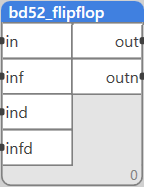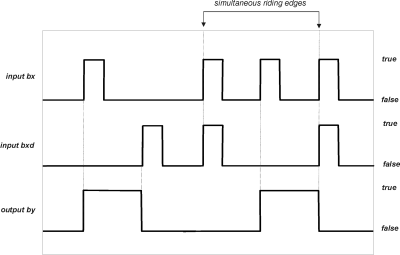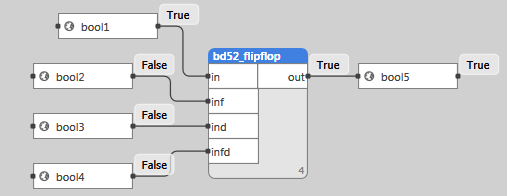Table of Contents
Flip-flop
Block name
BD52_FLIPFLOP
ST call
PROGRAM TESTST VAR BOOL1, BOOL2, BOOL3, BOOL4, BOOL5 :BOOL; FB : LIB.CORE.V1_0.BD52_FLIPFLOP; END_VAR FB(IN:=BOOL1,INF:=BOOL2,IND:=BOOL3,INFD:=BOOL4,OUT =>BOOL5); END_PROGRAM
Library
LIB\CORE
Version
V1.0
Description
The block controls its output value based on inputs, which read rising or faling edge, and thus set or reset the output.
Inputs
| Input | Type | Description | Default value |
| IN | BOOL | Rising edge sets out=true | False |
| INF | BOOL | Falling edge sets out=true | False |
| IND | BOOL | Rising edge sets out=false | False |
| INFD | BOOL | Falling edge sets out=false | False |
Outputs
| Output | Type | Description |
| OUT | BOOL | Output value |
| OUTN | BOOL | Negation of the output value |
Function
The block is a simple logical memory. Any rising edge at in and any falling edge at inf sets out=true. Any rising edge at ind and any falling edge at infd sets out=false. With more edges at the same time, out=false is preferred, see figure below. The output outn is negated out signal.
BD52 Flip-flop circuit – to keep it simple, inf=infd=false. Note that if more edges come at the same time, out=false is prioritized.


